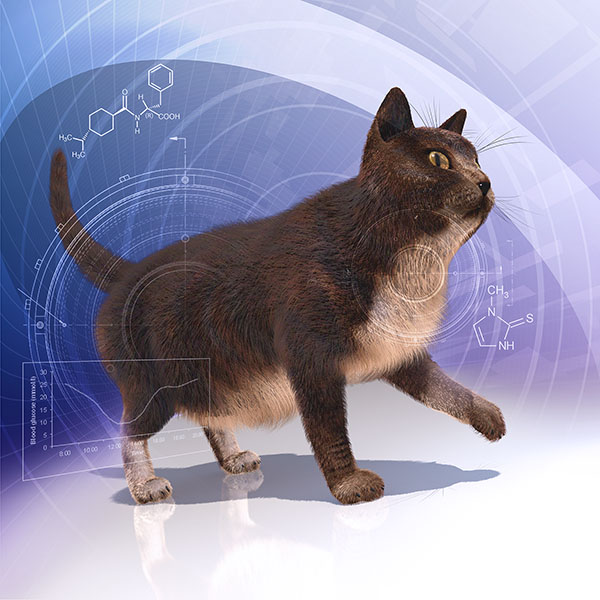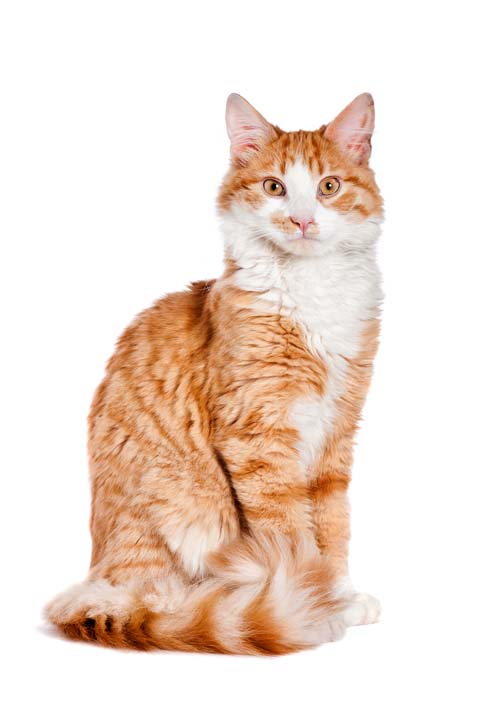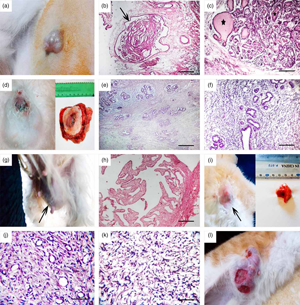mammary tumors in cats merck
When it appears in cats it can be fatal even if treated with surgery radiation and chemotherapy. These tumors develop as a result of abnormal replication of cells within the breast tissue leading to the development of cancerous masses in the area.

Mammary Hypertrophy In Cats Reproductive System Merck Veterinary Manual
These two forms of the disease have different diagnostics treatments management and prognosis.

. The risk of developing this cancer is twice as high in cats. The cause of mammary tumors is unknown however hormones play an important role in their development. Cancer in general afflicts an estimated 30 percent to 40 percent of all cats and one-third or so of these malignancies involve the mammary glands.
Mammary gland tumors are most common in middle-aged and older female cats but they can occur in younger female cats as well as male cats. Ductular carcinomas seem to kill cats about four times faster. 85-95 of mammary gland tumours are malignant and adenocarcinomas are the most common type of malignant neoplasm of mammary gland cancer.
The tremendously enlarged glands may appear erythematous and some of the skin may be necrotic. More than a quarter of unspayed female dogs will develop a mammary tumor during their lifetime. Females as well as males can develop this form of cancer.
Mixed mammary tumors and sarcomas are less commonly diagnosed than carcinomas. Mammary tumors in cats are usually malignant 85-93 80 of feline mammary tumors are ADC with tubular papillary solid and cribriform subtypes most common. They are prone to spread metastasize to the lungs and lymph nodes.
Mammary tumors are the third most common feline cancer1-3 accounting for 103 to 12 of all diagnosed tumors124 Female. Cat mammary gland tumors are formed by an abnormal mass of cells in the mammary breast glands. In cats the vast majority of mammary tumors are malignant.
Benign tumors of the feline mammary gland. The average age of cats with mammary gland tumours is 10-12 years oldIntact females are at. Approximately 90 of mammary tumors are malignant in cats and cats have fewer complex and mixed tumors than dogs.
More than one tumor may be. Mammary tumors can be benign non-cancerous or malignant cancerous. Parity does not affect feline mammary carcinoma development.
Invasion ulceration lymphatic invasion and lymph node metastasis is common. Papillary or tubular carcinomas tend to be the least aggressive. Mast cell tumors are a kind of tumor named for the type of skin cell from which they grow.
There are also generalized blood cell splenic and digestive tract forms of mast cell sarcoma. Approximately 90 of mammary tumors in cats are malignant cancerous. There are multiple types of mammary tumors that a cat can develop but the most commonly seen are carcinomas.
Feline mammary tumors are generally either carcinomas or adenocarcinomas. Mammary tumors develop because of spikes in female hormone estrogens that take place during a cats heat cycle. Mammary Cancer in Cats Explained.
This type of cancer is very aggressive and hard to treat as it spreads quickly. Sarcoma SCC and mucinous carcinoma subtypes are less common. Several reports have documented a strong association between the use of contraceptives and the development of benign or malignant mammary masses in cats.
Mammary tumors in cats are most common in older average 11 years intact females. Sarcomas mucinous carcinomas duct papillomas adenosquamous carcinomas and adenomas are. Occurring more than 95 percent of the time in females it is the most frequently diagnosed type of feline cancer.
Mammary cancer in cats is a type of cancer that impacts the feline mammary glands. Malignant mammary tumors. Mammary cancer is usually a malignant adenocarcinoma that appears in one or more of a cats breasts.
Most feline mammary tumors are adenocarcinomas with tubular or papillary types more common than solid or mucoid types. Women get breast cancer female dogs get mammary cancer. Get NHVs most useful pet cancer supplements in one holistic pack.
Mammary tumors are the third most common feline cancer 1-3 accounting for 103 to 12 of all diagnosed tumors. Ad Help your pet cope with symptoms like nausea loss of appetite and energy. Biologic behavior prognostic factors and therapeutic approach in cats.
Feline mammary hypertrophy is considered to be a hormone-dependent dysplastic change in the mammary gland. What many pet owners dont know is that the incidence of mammary tumor development in dogs is higher than in women as one in four unspayed female dogs are affected. Hyperplasia occurs within 12 wk after estrus or 26 wk after progestin treatment.
Cats spayed before 6 months or 12 months of age have a 91 or an 86 reduction respectively in the risk of mammary carcinoma development compared to intact cats. Mammary cancer in cats is the third most common type cancer seen in this species. Approximately 85 of feline mammary tumors are malignant and are histologically classified as adenocarcinomas.
Cats spayed before 6 months of age have a 7-times reduced risk of developing mammary cancer and spaying at any age reduces the risk of mammary tumors by 40 to 60 in cats. Tumors originating in these glands account for the third most common type of feline cancer after lymphoma and skin cancer. Female cats generally develop mammary cancermalignant adenocarcinomaswhen they are about 10 to 14-years-old.
Mammary gland breast tumours are similar to breast tumours in people and it is the third most common tumour in the cat. By spaying a cat at 6 months of age or before her first heat cycle it virtually eliminates the risk of getting mammary tumors. Feline mammary carcinomas represent the third most common type of feline cancer overall and the most frequently diagnosed feline cancer in cats older than 10 years of age.
What causes mammary tumors in cats. This incidence is huge yet awareness among owners of female dogs is lacking. Mammary tumors in cats are most often seen in older average age 11 years nonspayed females.
Mast cell tumors are the second most common skin tumor in cats. TYPES OF TUMORS. They can be benign noncancerous or malignant cancerous.
Other forms of breast and mammary cancer in a cat include adenomas duct papillomas and sarcomas. Feline mammary carcinoma is highly malignant and generally associated with a poor prognosis although studies suggest the range of survival times in affected cats is broad. Anaplastic carcinomas are the worst kind usually dispatching the patient three times faster than that.
There are several different types of. A mammary tumor develops as a result of abnormal replication of the cells that make up the breast tissue. The risk is much lower for spayed female dogs male dogs and cats of either gender.
Histologic grading of these tumors is achieved using the Elston and Ellis. Cats have two chains or.

Mammary Hypertrophy In Cats Reproductive System Merck Veterinary Manual

Epidermal And Hair Follicle Tumors In Animals Integumentary System Msd Veterinary Manual

Images Merck Veterinary Manual

Mammary Tumors In Cats Merck Wallpaperflare

Figures Merck Veterinary Manual

Pathological And Immunohistochemical Microscopy Of Natural Cases Of Canine And Feline Neoplastic Mammary Lesions Microscopy And Microanalysis Cambridge Core

Bone Tumors In Dogs And Cats Musculoskeletal System Msd Veterinary Manual

Mammary Tumors Vis Medicatrix Naturae Veterinary Clinic Facebook

Mammary Hypertrophy In Cats Reproductive System Merck Veterinary Manual